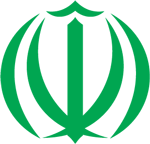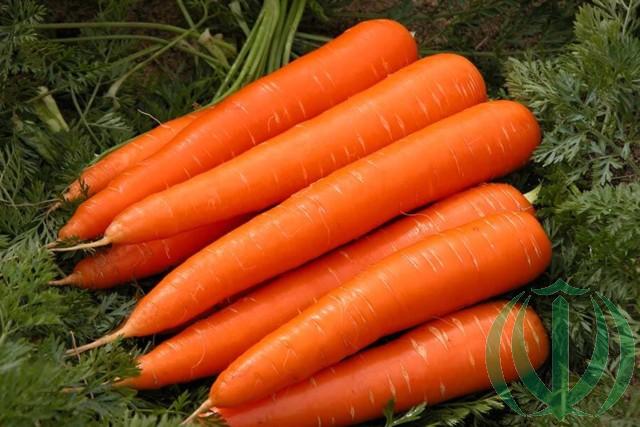Морковь можно встретить во всех областях Ирана: от Прикаспия до Аравийского моря. Но любопытной особенностью этого растения в Иране является её произрастание как в виде культивированных сортов, так и в виде дикорастущих. Корнеплоды дикорастущей моркови используются в народной медицине при печёночных коликах, истерии и метеоризме. Но если при выращивании культивированных видов моркови не используются химические удобрения, то её лечебные свойства эквивалентны дикорастущим.
Цвет корнеплодов моркови меняется от светло-жёлтого до оранжевого и зависит от количества витамина А: в жёлтых сортах витамина А меньше. В состав моркови входит также растительный инсулин – вещество, уменьшающее количество сахара в крови. Поэтому, наличие моркови в рационе больных диабетом им весьма показано.
Кроме витамина А морковь содержит витамины В, С, D и Е, что делает этот овощ одним из самых полезных. Свежие корнеплоды моркови оранжевых сортов очень вкусны и в тёртом виде особенно полезны детям и старикам. Жёлтые корнеплоды используются при приготовлении практически всех горячих блюд кухни народов Ирана. А плов без моркови приготовить вообще не возможно.
Вот одно из оригинальных блюд иранской кухни, о приготовлении которого рассказывает “Иран Сегодня”. Это куку хавидж.
Четверть килограмма моркови и одна средняя луковица натираются на тёрке. Сюда добавляются 2 яйца, четверть стакана планировочных сухарей, четверть стакана сушёного барбариса, пол чайной ложки молотого имбиря, соль и перец – по вкусу. Всё тщательно перемешивается и обжаривается с двух сторон на растительном масле. Подаётся со свежей петрушкой.
Отдельного рассказа заслуживает свежий морковный сок. Этот напиток в Иране необычайно популярен. В меню большинства кафе Ирана вместе с многими фруктовыми соками обязательно есть и морковный, который нередко готовят в присутствии гостя. Мы с супругой, бывая в Иране, ежедневно и в обязательном порядке выпиваем по 1-2 стакана этого чудесного напитка. Может быть поэтому наше самочувствие всегда бывает великолепным. На фото ниже вы видите процесс приготовления морковного сока в районе площади Имама Хомейни в Добром городе Хамадане. Такой стакан сока стоит 20.000 реалов (около 50 евроцентов). Скажу вам по секрету – морковный сок Хамадана мы считаем самым вкусным в Иране!

Iranian carrots
Carrots can be found in all areas of Iran: from the Caspian Sea to the Arabian Sea. But a curious feature of this plant in Iran is its growth both in the form of cultivated varieties, and in the form of wild-growing. Roots of wild carrots are used in folk medicine for liver colic, hysteria and flatulence. But if cultivation of cultivated carrot species does not use chemical fertilizers, then its medicinal properties are equivalent to wild-growing.
The color of the root vegetables of carrots varies from light yellow to orange and depends on the amount of vitamin A: in yellow varieties of vitamin A less. The composition of carrots also includes plant insulin – a substance that reduces the amount of sugar in the blood. Therefore, the presence of carrots in the diet of diabetics, they are very shown.
In addition to vitamin A, carrots contain vitamins B, C, D and E, which makes this vegetable one of the most useful. Fresh carrots of carrots of orange varieties are very tasty and in the grated form are especially useful for children and the elderly. Yellow root crops are used in cooking almost all hot dishes of the cuisine of the peoples of Iran. A pilaf without carrots to cook at all is not possible.
Here is one of the original dishes of Iranian cuisine, about cooking which tells “Iran Today”. This is kawku hawidzh.
A quarter kilogram of carrots and one medium bulb are rubbed on the grater. Two eggs, a quarter cup of planning biscuits, a quarter of a glass of dried barberry, a teaspoon of ground ginger, salt and pepper are added to taste. All is thoroughly mixed and fried on both sides in vegetable oil. Served with fresh parsley.
A separate story deserves a fresh carrot juice. This drink in Iran is extremely popular. In the menu of most cafes in Iran, along with many fruit juices, there is also a carrot, which is often prepared in the presence of the guest. My wife and I, visiting Iran, drink 1-2 glasses of this wonderful drink daily and without fail. Maybe that’s why our state of health is always great. In the photo below, you see the process of making carrot juice in the area of Imam Khomeini Square in the Good City of Hamadan. This glass of juice costs 20,000 reais (about 50 euro cents). I’ll tell you a secret – Hamadan’s carrot juice is the most delicious in Iran!


